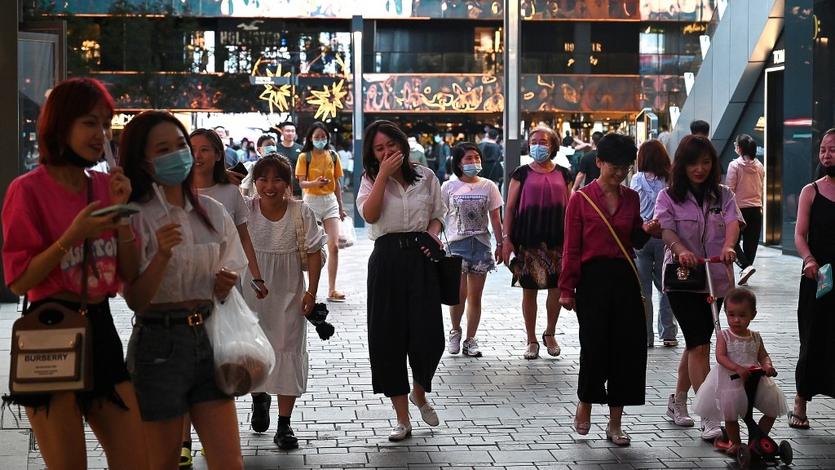 People walk in a shopping mall in Beijing on June 21, 2021. (GREG BAKER / AFP)
People walk in a shopping mall in Beijing on June 21, 2021. (GREG BAKER / AFP)
With China's per capita disposable income rising, stronger consumption in the second half of this year could catalyze higher economic growth, experts said.
On Monday, China's National Bureau of Statistics released its revised first-half statistics of per capita disposable income.
Revised NBS data showed Shanghai's first-half per capita disposable income topped the national list, reaching 40,357 yuan (US$6,219), Xinhua News Agency reported on Monday. As it transpired, Shanghai was the only region that saw its per capita disposable income exceed 40,000 yuan.
Beijing's corresponding figure was 38,138 yuan, a 10.3 percent jump year-on-year in nominal terms. Eastern China's Zhejiang province ranked third with 30,998 yuan.
Shanghai and Beijing have also led per capita consumer spending nationwide in the first half at 23,644 yuan and 21,564 yuan, respectively, NBS data showed.
Researchers attributed the relatively higher level of income and stronger spending in first-tier cities to the latter's advanced, comprehensive industrial structures and higher diversity on the supply front.
With vaccine rollouts globally and the world recovering from COVID-19, international travel is likely to gradually pick up in the second half. This will underpin consumption recovery and better leverage growth
Su Jian, director of the China Center for Economic Research at Peking University, noted that the distinctly higher levels of per capita disposable income in Shanghai and Beijing are the main factor driving stronger spending in the two cities.
Shanghai and Beijing, being the most advanced cities in China, provide very diversified types of consumption, he said. These cities own particularly well-developed services sector that perfectly meets various needs.
ALSO READ: China to turn 5 cities into global consumption centers
Su said consumption momentum in the second half of the year will be even stronger. With vaccine rollouts globally and the world recovering from COVID-19, international travel is likely to gradually pick up in the second half. This will underpin consumption recovery and better leverage growth.
China is rolling out new policy incentives to boost consumption. On Monday, the Ministry of Commerce announced that with the approval of the State Council, China's Cabinet, the four municipalities of Beijing, Shanghai, Tianjin and Chongqing, and Guangzhou, capital of Guangdong province in South China, will take the lead in developing international consumption center cities.
Earlier this month, NBS announced major first-half economic data. Total retail sales of consumer goods, a key barometer of the health of the economy, rose 23 percent year-on-year to 21.2 trillion yuan. Retail consumption contributed 61.7 percent to China's GDP growth, nudging ahead of the pre-pandemic figures.
Liu Xiangdong, a researcher at the China Center for International Economic Exchanges, said overall, consumption made a steady recovery in the first half. Online retail sales' strength turned out to be a highlight, particularly for daily consumption goods.
READ MORE: Generation Z helping drive nation's consumption boom
This, he said, shows that with pandemic containment measures normalizing, online retail has become a commonly adopted new model of growth.
In an article accompanying the revised data release, Fang Xiaodan, a former NBS official, said household income in the first half has continued the steady growth seen in the first quarter while household consumption has accelerated.


